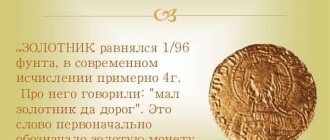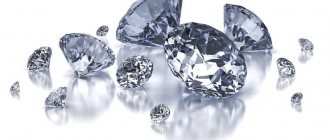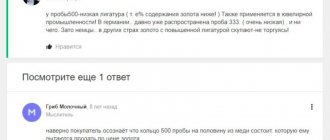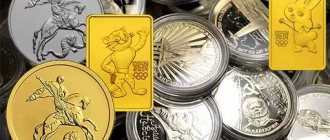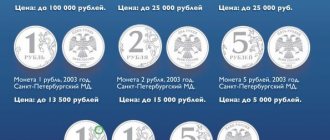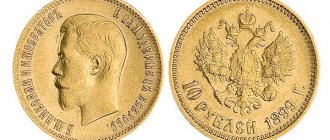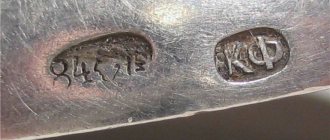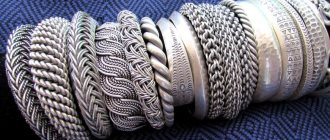Russian coins indicating weight and fineness in spools
In the Russian system of weights and measures there was a unit with the alluring name “zolotnik”. It is inextricably linked with numismatics, since the weight of gold and silver was not only measured in spools, but also minted on coins of the Russian Empire (and even the USSR). In addition, the purity of the metal in the spool sample system was calculated in fractions. Therefore, numismatists interested in royal coins should take a closer look at the spool.
Spool like a coin
Philologists trace the origin of the word “zolotnik” to gold coins that came to Ancient Rus' from Byzantium. If you listen closely, the words “solid” (the name of the Byzantine coin) and “gold” (the Russian name for the metal from which it is made) seem very similar in sound. However, in those days the metal was often called a little shorter - “gold”. For the first time, the word “zolotniki” in relation to gold coins was recorded in the agreement between the Kyiv Prince Oleg and Byzantium, dated 911.
Zlatnik of Kievan Rus
From this word came the name of the first coin of Ancient Rus' made of gold, which historians call “zlatnik” or “zolotnik”. With a diameter of 19 to 24 mm, the weight of known specimens varies from 4 to 4.4 grams, averaging 4.2 grams (the weight of the Byzantine solidus in those days was about four and a half grams). The design of the zlatnik (or zolotnik) also copies the “bezant” or “bizantine”, as the Byzantine solidus was called in Europe. On the front side there is a portrait of the ruler (this is evidenced by the inscriptions “VLADIMIR ON THE TABLE” or “VLADIMIR AND HIS GOLD”). The prince is also indicated by the family sign of the Rurikovichs, similar to a trident (located above Vladimir’s shoulder). On the back is the face of God. Christ appears with the Gospel pressed to his chest. So that there is no doubt, the design is complemented by the arc inscription “JESUS CHRIST”. Zlatnik is a cast, not minted coin. The researchers noted both very noticeable casting defects and the elaboration of the elements of the mold design, which was quite complex for that time.
100 rubles 1988 (gold)
Together with the silver coin (serebrenik), the zolotnik became the fundamental basis of the coinage of our country. The small number of coins, however, did not have much economic significance, since this money, most likely, was not intended for settlements. They were probably given a political role. The presence of coins made of precious metals declared that Kievan Rus did not lag behind Byzantium, which it looked up to. In tribute to the zlatnik, the State Bank of the USSR placed his image on one of the coins included in the large-scale series “1000th Anniversary of Russia”.
Spool as a measure of weight
Although the spool was not widely used as a coin, it remained in use as a measure of weight. The Russian spool was equal to 4.266 grams and was used for weighing rare and valuable objects and precious metals, as evidenced by the proverb “The spool is small, but the gold weighs; The camel is big, but it carries water.” Another proverb - “Small is the spool, but dear” - is tied to the issue of gold coins that appeared during the monetary reforms of Peter the Great. Let's try to figure out how true this is.
2 rubles 1718 (gold)
There were no silver Peter's rubles yet, but gold single and double chervonets with the Tsar's profile on the obverse were already minted. They were made using high-grade gold (969 standard). A single chervonets weighed 3.47 grams (pure metal 3.36 grams). The double chervonets had a total mass of 6.94 grams (6.72 grams of pure metal). As you can see, the weight of these coins is very far from the above indicated value of the spool. This fact is not surprising, since the chervonets were intended for settlements with other countries, and not for internal circulation. Most likely, the golden two-ruble notes put into circulation under Peter I in 1718 are compared to the spool in the proverb. Their weight of 4.1 grams is already close to the value of the spool. However, it is necessary to add that their gold standard is 781, so there was only 3.2 grams of pure metal in such a two-ruble note. In numismatic articles regarding the results of the monetary reforms of Elena Glinskaya (1535) and Peter I (the junction of the 17th and 18th centuries), it is often presented that Russia was the first to switch to the basis of a decimal accounting system in the monetary sphere. But the spool as a unit of weight measurement was not based on the decimal system. It was divided into 96 shares and represented a third of the lot, which in turn was equivalent to 1⁄32 pounds.
Spool sampling system
When talking about the lot, we must remember that it was he who was the basis of the lot system of samples, on which measurements of metal purity were based in Western Europe. For example, in this system the number of lots of precious metal in one grade of alloy was taken into account. In 1711, Russia introduced a spool standard for silver. For gold it would be approved much later - in 1733, already under Anna Ioannovna.
In the sampling system, the unit was a spool consisting of 96 shares, in which the content of pure metal and the content of alloy were expressed. If no explanation was given for the number, then it meant pure gold or silver. The number “96” denoted a metal with an exceptionally small amount of impurities, and the sample could not be higher. The most commonly used samples in this system were the 92nd, 72nd and 56th samples. For example, the 72nd sample meant that out of 96 shares, 72 shares were allocated to pure metal, and 24 shares to the ligature. Accordingly, the alloy was designated “72-spool silver” or “72-spool gold.” The metal in two gold rubles corresponded to the 781st standard in the metric system or the 75th in the spool system. It is very simple to convert the value of the spool system of hallmarks to metric: you need to multiply the value of the fractions by 125 and divide by 12. For gold jewelry, an alloy was used that had a hallmark of at least 36.
10 rubles 1755
Let's see how the weight in spools and the spool test system intersected in official documents of that time. For example, let’s take the Personal Decree of Elizabeth Petrovna “On the Making of Gold Coins, Imperials, Half-Imperials and Red Coins”:
“So that Our current and gold coins are also established in good order for the benefit of commerce, and the far-reaching reach of Our glory and splendor, and not only against Our silver coins, but also against foreign coins of the same kind, have a correct proportion, and can be created with multiplication, for which they most graciously indicated.
- From now on, make gold imperials and half-imperials at the price of ten and five rubles,
eighty-eighth standard , ten ruble coin or imperial, each weighing
three spools and eighty-five ninety-sixths of a spool
, five-ruble or half-imperial, each weighing a
spool and ninety-ninety-sixths of a spool
, according to the image below in this description with the price assigned to them, for which coins throughout Our Empire will go at the prices assigned to them without adding or decreasing it. - Made from 1701 to 1754 in red coins, to go among the people and accept all kinds of payments, for each identical red note there are two rubles of twenty-five kopecks, and a double one is twice as much.
- The gold two-ruble coins made from September 1718, 1730 to the 26th, with the image of the Apostle St. Andrew, first called with a cross, are no longer in circulation among the people, and where there are such coins in our treasuries, they are no longer released to the people, but send to Our mints, where there will be more capacity nearby, for redistribution into the above-mentioned imperials and half-imperials..."
Here we are faced with the 88th spool test. When converting it to metric (88*125/12), we get the number “916.66666...”, that is, the 917th sample, which is indicated in the catalogs. Products made of precious metals had different characteristics than coins, therefore the 94th, 92nd, 82nd and 72nd samples were considered standard for gold products. The 56th standard occupied a special place, because after the transition to the metric system, it gave rise to the 583rd standard, which became the most popular for Soviet gold jewelry. The standards for silver were the 95th, 91st, 88th and 84th samples of the spool system.
Silver ruble of Paul I
The hallmark in the spool system began to be indicated in 1798 on rubles from the reign of Paul I in the form of a raised inscription on the edge “EIGHTY THIRDERS WITH ONE THIRD STAMP.” At the same time, the edge on other denominations in silver remains cord-like. On the edge of rubles of Alexander I of mass coinage, this inscription remained until 1810 (newly made copies are known with a depressed inscription on the edge of a different content from later issues).
Coins of the Russian Empire with the designation of weight in spools
Silver ruble of Alexander I
Since 1810, the St. Petersburg Mint, which had recently completed the transition to new equipment, once again changed the design of all-Russian coins. For large silver, the reverse indicated the weight of pure metal in spools and shares of “PURE SILVER 4 GOLD. 21 SHARE." The fineness of the alloy and the total weight of the coin are now indicated by a pressed inscription on the edge “SER. 83 1/3 SAMPLES 4 AGL. 82 14/25 SHARES.” Let's try to calculate the total weight in the usual grams. 14/25 is 0.56. Now let's convert the fraction to a decimal fraction: 82.56 / 96 = 0.86. In spools the total weight is 4.86, and in grams 4.86 * 4.266 = 20.73276. Let's look at the catalog and find a value of 20.73 grams.
Silver half of Alexander I
If the metal standard for half coins remained the same, then their weight was half as much, therefore the inscription on the reverse changed - “PURE SILVER 2 GOLD = 10 1/2 HALES.” At the edge, the total weight is also different - “SER. 83 1/3 SAMPLES 2 AGL. 41 7/25 DOL.” Having gone through the algorithm for converting samples into the metric system, we get the 868th sample of metal.
The rarest test coin of Nicholas I
Half-fifty coins of this type were not issued under Alexander I. They could have appeared under Nicholas I, but only a sample from 1827 with the inscription on the back “PURE SILVER 1 GOLD” remains for history. 5 1/4 SHARES”, which became one of the most expensive coins of the Russian Empire. Instead, analogues were put into circulation, in which the reverse indicated not the weight, but the denomination - 25 kopecks.
Gold coin of Alexander I
Gold coins acquired an indication of weight on the reverse even under Alexander I. Since 1817, five-ruble coins began to be minted with a new type of design (“eagle with lowered wings”). The center of the reverse has the inscription “PURE GOLD 1 GOLD = 39 LOVES.”. The edge, unlike silver rubles and poltinas, does not contain information about weight and purity and is decorated with a sequence of inclined dotted lines.
Platinum coin of Nicholas I
In 1828-1845. The St. Petersburg Mint minted a line of platinum, which included denominations of 3, 6 and 12 rubles. Almost pure metal with a small proportion of impurities was used for minting, so the numerical indication of the sample was unnecessary, and the total weight differed only slightly from the weight of platinum. We will give the mass of each coin below in spools (as indicated by the inscription on the reverse) and grams:
- 3 rubles - “2 ZOL• 41 DOL• PURE URAL PLATINUM” – 10.36 grams;
- 6 rubles - “4 ZOL• 82 DOL• PURE URAL PLATINUM” – 20.71 grams;
- 12 rubles - “9 ZOL• 68 DOL• PURE URAL PLATINUM” – 41.41 grams.
Gold 3 rubles
Since 1869, the three-ruble denomination has been assigned to gold coins, which complement the minting of five-ruble coins. The weight of the precious metal here turned out beautifully, without fractions - “PURE GOLD 81 PARTS”, which corresponds to 3.6 grams. The metal breakdown remains the 917th, already familiar to us from Elizabethan coins.
Gold coin of Alexander II
In 1885, a regulatory document “Rules on the Coin System” appeared. Starting next year, the gold standard will be lowered to 900. The minting of three-ruble notes ceases, and a gold ten is added to the five. The portrait of the autocrat returns to the obverse, and the State Emblem moves to the reverse. But the weight of the pure metal remains on the coin, only now it is indicated on the edge along with the sign of the mintsmeister: “PURE GOLD 1 GOLD 34.68 SHARES (A•G)” for 5 rubles and “PURE GOLD 2 GOLD 69.36 SHARES (A• D)" for 10 rubles. Since 1886, the standard of silver in 25 and 50 kopecks, as well as rubles, has been increased to 900. The ruble coin acquires the inscription on the edge “PURE SILVER 4 ZOLOTNIK 21 SHARES (A•G)”, which appeared instead of half a 50 kopecks - “PURE SILVER 2 ZOLOTNIK 10.5 SHARES (A•G)”, and 25 kopecks instead of the dotted edge – “ PURE SILVER 1 GOLD 5.25 PARTS (A•G).”
Gold coin of Nicholas II
During the Witte reform, Russia switched to the gold standard with a simultaneous decrease in the gold content of the ruble. In 1897, a new line of coins appeared with the same hallmark, but a different weight. On their edge, along with the initials of the mintzmeister, the weight of the precious metal is also indicated:
- 15 rubles - “PURE GOLD 2 GOLD 69.36 HALES” - 11.61 grams;
- 10 rubles - “PURE GOLD 1 ZOLOTNIK 78.24 SHARE” - 7.74 grams;
- 7 rubles 50 kopecks - “PURE GOLD 1 ZOLOTNIK 34.68 SHARE” - 5.8 grams.
The exception was the five-ruble coin, where the edge is filled with a pattern of lines, among which is the sign of the mintzmeister. The weight of pure silver in spools under Nicholas II continues to be indicated by the edge inscription on 50 kopecks and the ruble. A corrugated edge receives 25 kopecks, and their production is soon phased out. In this form, the weight of pure metal, measured by spools, is maintained until the collapse of the Russian Empire. At the turn of the century, the “Regulations on Weights and Measures of 1899” was published, where 1 spool was officially equated to 1/96 of a pound, which is approximately 4.26575417 grams.
Indication of weight in spools on Soviet coins
Silver ruble 1922
The first coins with the symbols of the RSFSR, minted in 1921, were made according to tsarist standards. Not only the diameter and mass values have been preserved, but also the silver standard, as well as an indication of the weight of pure metal in the spools. It was minted in Slavic script on rubles (“PURE SILVER 4 ZOLOTNIK 21 SHARE”) and 50 kopecks (“PURE SILVER 2 ZOLOTNIK 10.5 SHARE”) in 1921 and 1922. along with the sign of the mintzmeister. The weight in spools is also indicated on the edge of the 1923 gold chervonets, with parameters similar to the Tsar’s ten-ruble notes.
Silver fifty dollars 1924
In 1924, the first rubles and fifty dollars of the USSR were issued. At that time, the metric system of measures was already in full use, which was legalized by the decree of the Council of People's Commissars of the USSR of July 21, 1925. The edge inscription represents the transition period from the spool system to the metric one. The main designation of weight is already indicated in grams, but in brackets it is also given in spools. Therefore, on fifty kopecks the inscription (if you omit the mintsmeister sign) looks like this: “PURE SILVER 9 GRAMS (2 Z. 10.5 D.),” and on rubles – “PURE SILVER 18 GRAMS (4 Z. 21 D.).” Since 1925, weight per edge has been indicated only in grams. Regarding the spool system of samples, we can say that the transition from it to the metric one occurred after 1927.
Golden chervonets 1982
And yet, the weight in spools happened to once again appear on the coins of the USSR. From 1975 to 1982, the State Bank of the USSR massively minted replicas of gold chervonets of the RSFSR, leaving the previous design with the exception of the date and replacing the sign of the mintsmeister with the designation of the yard. Therefore, we can say that the last Russian coins using the designation of weight in spools were issued in 1982. These chervonets are still in circulation, as the Bank of Russia assigned them the status of an investment coin.
What is 1 spool equal to?
Under the conditions of the old Russian system of measuring weights for jewelry metals, one spool had the following analogues:
- 0.0006 Berkovites;
- 0.00026 pounds;
- 0.01 lb;
- 0.33 lots;
- 96 shares.
The modern metric system uses different ratios. According to them, one spool is equal to:
- 4.265 g;
- 0.004266 kg;
- 4.27 x 10-9 kilotons;
- 4.27 x 10-6 tons;
- 4.27 x 10-5 quintals;
- 0.04 newton;
- 21.33 carats;
- 4265.75 mg;
- 4265750 mcg.
In Tsarist Russia, other measures of weight for large volumes of things were also used. The three most common were:
- A pound is the largest measure in terms of value (only Berkovites were higher than it, but they were not used in everyday life), equal to 40 pounds;
- The pound consisted of 32 lots, and could also be translated as 96 spools;
- Lot – a measure of weight equal to 3 spools.
If today these terms can be found exclusively in numismatist catalogs, then in Tsarist Russia they were used everywhere. This is due to the fact that the concepts were familiar both to merchants and jewelers, and to the common people. They are also found in documentary sources of that time. Thanks to the latter, it was possible to determine the proportions and weight of the gold-containing coin as accurately as possible.
